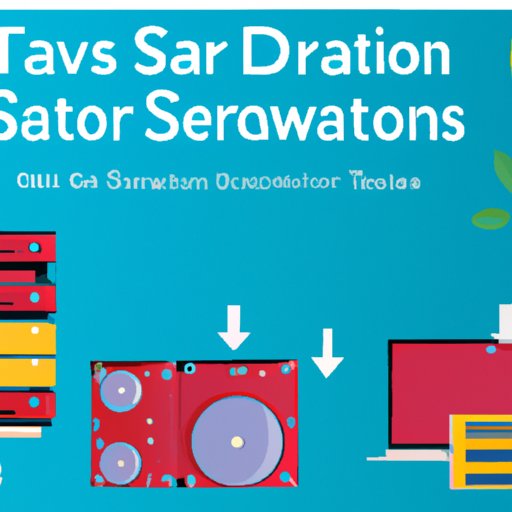Introduction
When it comes to data storage, there are a lot of options out there. From internal hard drives to external hard drives, solid state drives (SSDs), network attached storage (NAS), and cloud storage, there are plenty of ways to store your data. But how do you decide which storage solution is right for you? This article will explore the different types of storage solutions, how to determine your storage needs, and what to consider when purchasing additional storage.

Research the Different Types of Storage Solutions
Before making a decision on which storage solution is best for you, it’s important to understand the different types of storage solutions available. Here’s a quick overview of some of the most popular storage solutions:
Internal Hard Drives
Internal hard drives are the most common type of storage solution. They are typically installed inside a desktop or laptop computer and provide a large amount of storage space. Internal hard drives can be either spinning hard drives (HDD) or solid state drives (SSD). HDDs are cheaper, but slower than SSDs, while SSDs are more expensive, but faster.
External Hard Drives
External hard drives are an easy and convenient way to add additional storage to your computer. They are usually connected via USB and offer a large amount of storage space in a compact package. Like internal hard drives, they can be either HDD or SSD.
Solid State Drives (SSD)
An SSD is a type of storage device that uses flash memory instead of a spinning hard drive. They are much faster than traditional hard drives, which makes them ideal for storing large amounts of data and running applications. However, they are also more expensive than traditional hard drives.
Network Attached Storage (NAS)
A NAS is a dedicated storage device that connects to a home or office network and provides shared access to files and folders. They are great for businesses or households with multiple users who need to access the same files. NAS devices range in size from a single drive to multiple drives in a RAID array.
Cloud Storage
Cloud storage is a storage solution that allows users to store their data on remote servers hosted by a third-party provider. Cloud storage is typically accessed over the internet and offers a variety of features such as file sharing, collaboration, and backup. The main benefit of cloud storage is that it is scalable and can be easily accessed from anywhere.
Determine Your Storage Needs
Once you have a better understanding of the different types of storage solutions available, it’s time to determine your storage needs. Consider both your current and future needs when making this decision. Think about the types of files you want to store, how much storage space you need, and the speed and reliability you require.
Consider Long-term Costs and Benefits
When buying additional storage, it’s important to consider the long-term costs and benefits. Compare the initial cost of the storage solution with the potential long-term savings it could provide. Also, evaluate any potential risks and rewards associated with the purchase. For example, if you’re considering a NAS device, make sure you understand the implications of using a RAID array.
Compare Prices and Features
The next step is to compare the prices and features of the different storage solutions. Look for deals and discounts, and make sure to read the fine print. Make sure to compare the features and warranties offered by each storage solution, as this can make a big difference in the long run.
Purchase and Install the Right Storage Solution
Now that you’ve done your research and compared prices and features, it’s time to purchase and install the right storage solution for your needs. Make sure to choose a solution that meets your requirements and follow the instructions carefully when installing. If you’re not comfortable with the installation process, consider hiring a professional.
Conclusion
Buying additional storage can be a daunting task, but with a little bit of research and planning, you can find the right solution for your needs. Consider all the different types of storage solutions, determine your storage needs, compare prices and features, and purchase and install the right solution. With the right storage solution, you’ll be able to store your data securely and access it quickly and easily.


